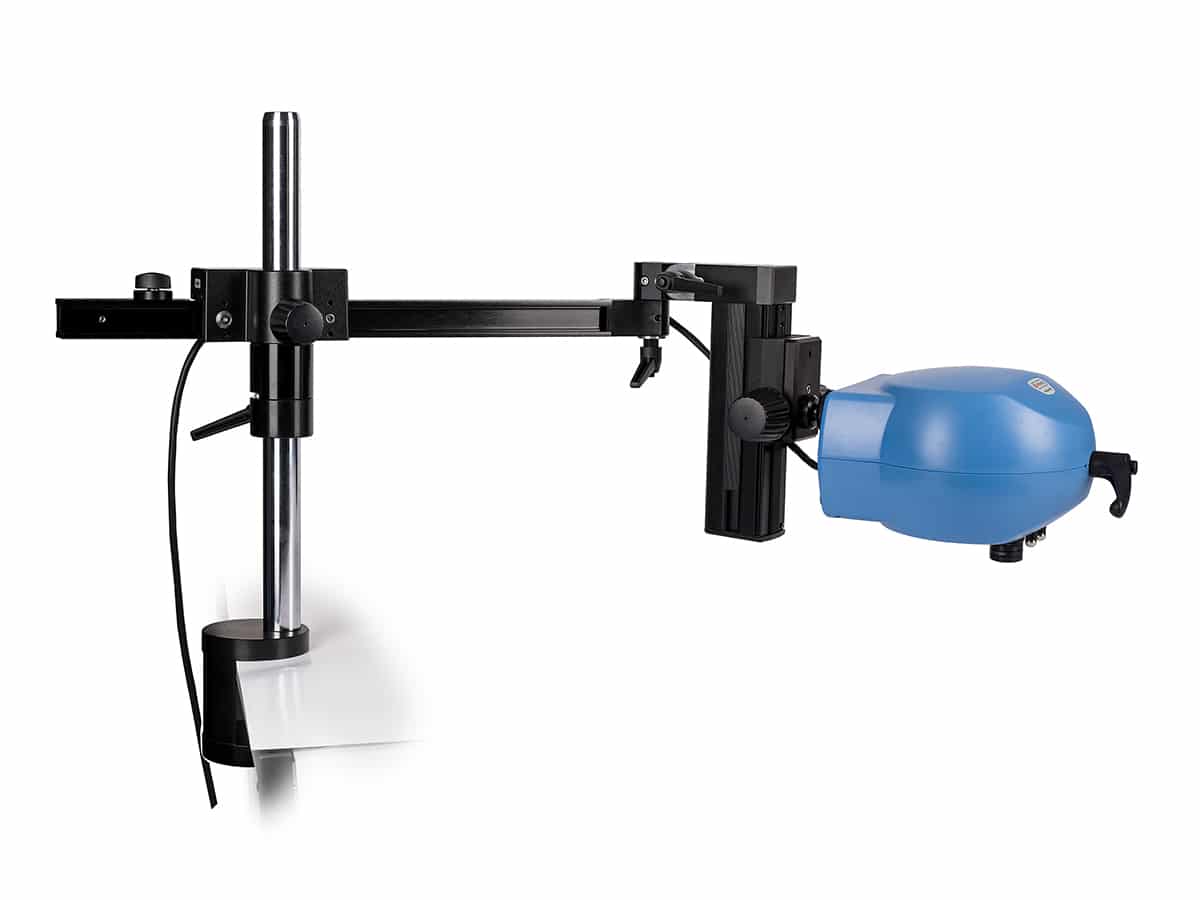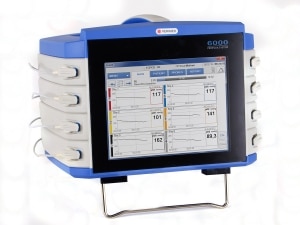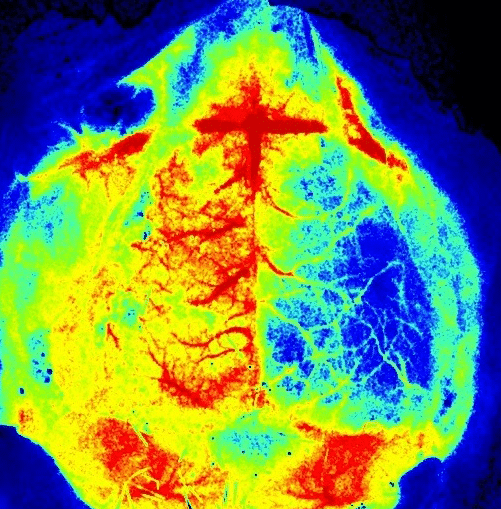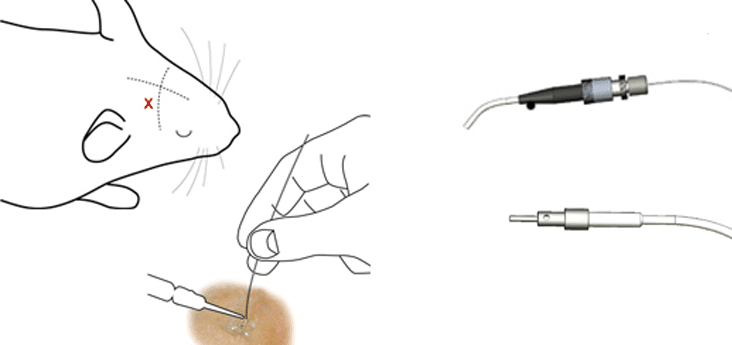Stroke Model (MCAO)
![]()
Changes in Cerebral Blood Flow (CBF) is a characteristic feature of many neurological conditions and therefore the focus of numerous studies in the fields of Neuroscience. These studies require tools to investigate these changes preferably through non-invasive, real time methods. The PeriCam PSI System is a blood perfusion imager based on Laser Speckle Contrast Analysis (LASCA) technology. LASCA provides new means to study the microcirculation in ways that were not possible in the past. It allows visualization of tissue blood perfusion in real-time and combines dynamic response with spatial resolution. There is no influence on the perfusion, as no direct contact to the tissue is needed, nor contrast dyes or tracer elements. To further enhance its usability, dedicated application software, PIMSoft, has been developed. There has been widespread use of the PSI to monitor CBF and changes to CBF in multiple murine models to describe disease pathology and monitor treatment efficacy.
Stroke models
Several models in different species are currently known to induce cerebral ischemia.(1) Global ischemia models, both complete and incomplete, tend to be easier to perform. However, they are less immediately relevant to human stroke than the focal stroke models because global ischemia is not a common feature of human stroke. However, global ischemia is also relevant in various settings, e.g. in global anoxic brain damage due to cardiac arrest.
Middle cerebral artery occlusion (MCAO) is a commonly used stroke model in mice and rats. A filament is inserted to the artery to occlude blood flow for a fixed period of time (usually 30-120 mins) before removal for reperfusion resulting in ischemic stroke. (2), (3), (4), (5), (6), (7), (8), (9), (10). The cortical blood flow can be monitored to ensure that a stroke has, in fact, been induced.(1) This can be done using traditional laser Doppler perfusion monitoring by gluing a probe to the skull or by laser speckle contrast imaging (LSCI), which provides real-time imagery of the cerebral blood flow (CBF).
PeriCam PSI for characterizing Ischemic Brain injury
Perimed was the first company to commercialize laser-based microcirculation imaging and has over the past 40 years been the world leader in perfecting those techniques. Unique features qualify the PSI to study ischemic brain injuries in several models including stroke, chronic cerebral hypoperfusion, and traumatic brain injury.
Large Field of View: Visualization of entire brain area allows confirmation and characterization of ischemic injury
High Spatial resolution: Provides precise locations of injury. Inserting Regions of interest (ROIs) allows measurement of area of injury and can be used to track recovery from injury.
Resume recording function: Simplifies data acquisition and analysis for longitudinal studies by capturing repeated measurements of the same subject in a single file allow easy comparison of same ROIs overtime.
High frame rate and spatial resolution allow capture of dynamic changes in cerebral microvasculature in small structures due to external stimuli.
PeriFlux System 6000 Stroke Model Monitor
PeriFlux System 6000 Stroke Model Monitor is a complete set for studying induced strokes in rats or mice. All the necessary equipment and accessories are delivered together with detailed instructions for use.
Recommended products: Stroke model kit, PSI HR, PSI Z and PF 6000 laser doppler.
References:
- Ansari, S., Azari, H., McConnel, D.J., Afzal, A., Mocco, J. Intraluminal middle cerebral artery occlusion (MCAO) model for ischemic stroke with laser Doppler flowmetry guidance in mice, Journal of visualized experiments, 2011
- Morroniside promotes angiogenesis and further improves microvascular circulation after focal cerebral ischemia/reperfusion. T. Liu, B. Xiang, D. Guo, F. Sun, Re. Wei, G. Zhang, H. Aia, X.Tian, Z. Zhu, W. Zheng, Y. Wanga W.Wang. 2016, Brain Res Bull. , pp. 111-118.
- C‐C Chemokine Receptor Type 5 (CCR5)‐Mediated Docking of Transferred Tregs Protects Against Early Blood‐Brain Barrier Disruption After Stroke. Peiying Li, Long Wang, Yuxi Zhou, Yu Gan, Wen Zhu, Yuguo Xia, Xiaoyan Jiang, Simon Watkins, Alberto Vazquez, Angus W. Thomson, Jun Chen, Weifeng Yu, Xiaoming Hu. 2017, Journal of the American Heart Association, p. e006387.
- Endothelium-targeted overexpression of heat shock protein 27 ameliorates blood–brain barrier disruption after ischemic brain injury. Yejie Shi, Xiaoyan Jiang, Lili Zhang, Hongjian Pu, Xiaoming Hu, Wenting Zhang, Wei Cai, Yanqin Gao, Rehana K. Leak, Richard F. Keep, Michael V. L. Bennett, and Jun Chen. 2017, PNAS, Proceedings of the National Academy of Sciences, pp. E1243-E1252.
- Brain ischemic preconditioning protects against ischemic injury and preserves the blood-brain barrier via oxidative signaling and Nrf2 activation. Tuo Yang, Yang Sun, Leilei Mao, Meijuan Zhang, Qianqian Li, Lili Zhang, Yejie Shi, Rehana K. Leak, Jun Chen, Feng Zhang. 2017, Redox Biology, pp. 323-337.
- Brain-Derived Glia Maturation Factor β Participates in Lung Injury Induced by Acute Cerebral Ischemia by Increasing ROS in Endothelial Cells. Fei-Fei Xu, Zi-Bin Zhang, Yang-Yang Wang & Ting-Hua Wang. 2018, Neuroscience Bulletin, pp. 1077-1090.
- The microRNA miR-7a-5p Ameliorates Ischemic Brain Damage by Repressing α-Synuclein. Kim T, Mehta SL, Morris-Blanco KC, Chokkalla AK, Chelluboina B, Lopez M, Sullivan R, Kim HT, Cook TD, Kim JY, Kim H, Kim C, Vemuganti R. 2018, Science Signaling, p. eaat4285.
- Assessing the effects of Ang-(1-7) therapy following transient middle cerebral artery occlusion. M. M. C. Arroja, E. Reid, L. A. Roy, A. V. Vallatos, W. M. Holmes, S. A. Nicklin, L. M. Work & C. McCabe. 2019, Scientific Reports, p. 3154.
- Modulation of brain cation-Cl− cotransport via the SPAK kinase inhibitor ZT-1a. Jinwei Zhang, Mohammad Iqbal H. Bhuiyan, Ting Zhang, Jason K. Karimy, Zhijuan Wu, Victoria M. Fiesler, Jingfang Zhang, Huachen Huang, Md Nabiul Hasan, Anna E. Skrzypiec, Mariusz Mucha, Daniel Duran, Wei Huang, Robert Pawlak, Lesley M. Foley, T. Kevin Hitc. 2020, Nature Communications.
- Endothelium-targeted deletion of the miR-15a/16-1 cluster ameliorates blood-brain barrier dysfunction in ischemic stroke. Feifei Ma, Ping Sun, Xuejing Zhang, Milton H. Hamblin, and Ke-Jie Yin. 2020, Science Signaling.
Please fill in the form to get more information
Disclaimer: It is possible that the products on the Perimed website may not be cleared for sale in all markets.







